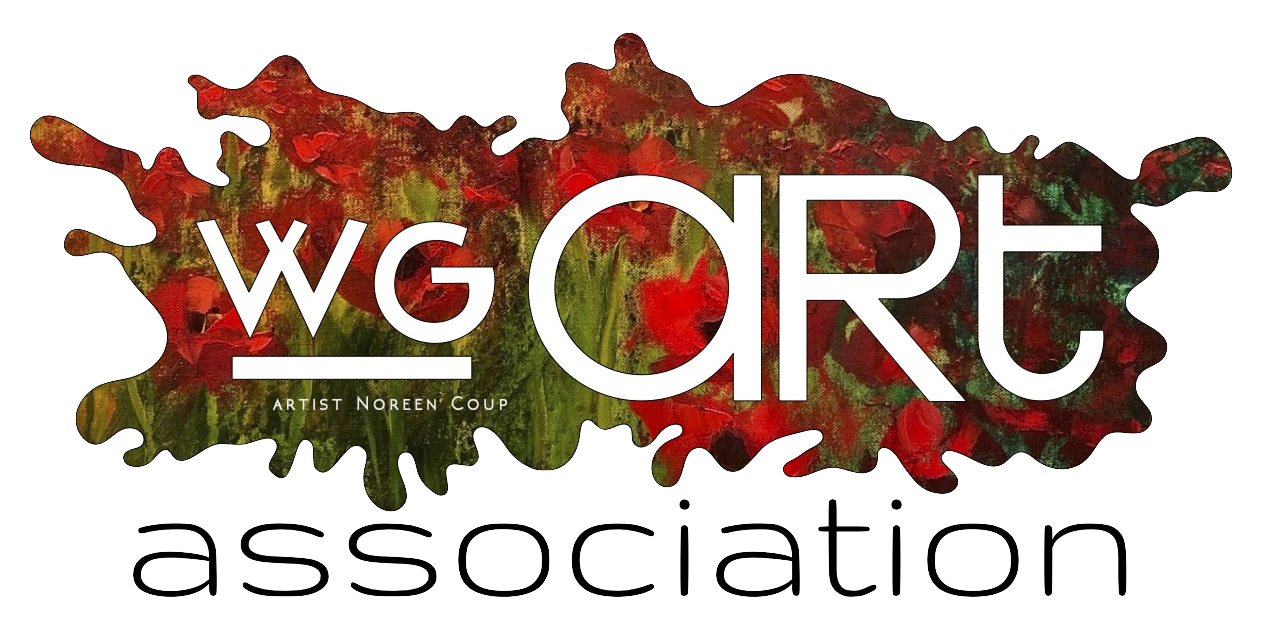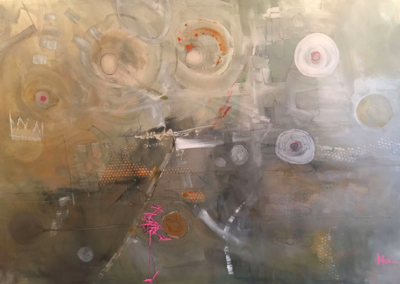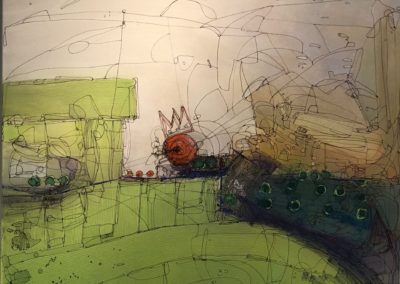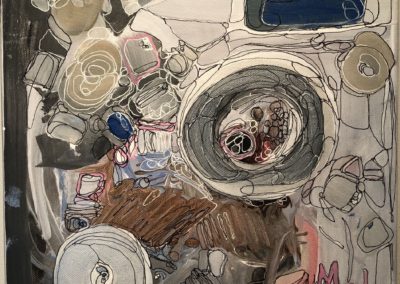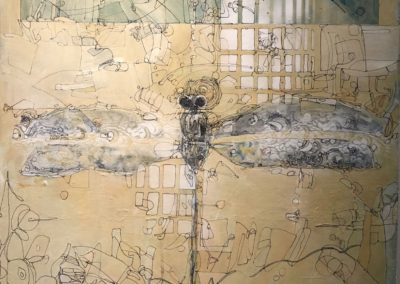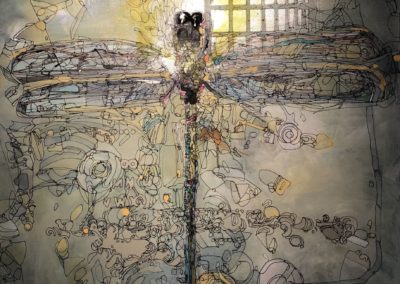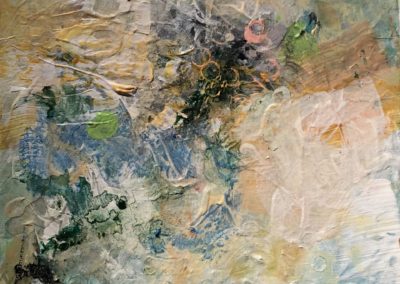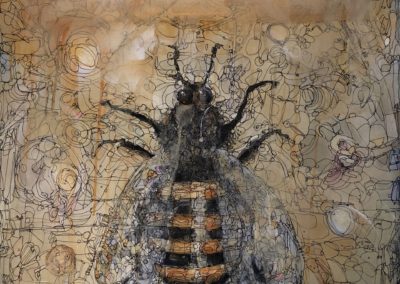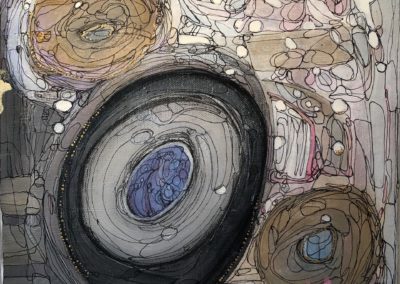Featured Artist Monte Olinger
Video Made For Sam FlaxMonte Olinger was raised in a family of artists and art teachers; he grew up with painting as a way of life. Not long after he finished his master’s degree in Interior Design at the College of Visual Arts at Florida State University, he began to develop symptoms of a neurological movement disorder called dystonia. Because of the physical limitations of his condition, he taught himself to paint with both hands to expand his options.
For someone like Olinger, whose body is capable of bringing him great pain at times, art-making can become a process of finding a way back to pleasure. These positive experiences balance the score and make living a worthwhile pursuit even in the face of great challenges. The creative process is a spiritual and emotional journey, and therefore promotes healing and overall wellness. Painting is Olinger’s form of therapeutic self-expression.
Art therapy is used to help adults and children suffering from a broad range of physical and mental health issues. It works in a number of different ways, depending on who is making art and why. The art process can be used to facilitate expression when words fall short, it can help to clarify or unearth parts of the self by reflecting back images from the unconscious, and it can shift or energize the psyche by tapping into different areas of the brain to create new neural pathways. Throughout our lives, we experience an enormous amount of visual stimuli, and the human brain stores much more of that information than we are consciously aware. Visual expression of imagery serves to explore and map the uncharted territory of the brain.
For Olinger, the creative process is a visceral liberation; he gets lost in an energetic release. This emotional experience is actually quite grounding, particularly when his body is limited. When his right hand is affected by physical symptoms, Olinger works abstractly and makes use of his left hand, thus engaging more of his brain for unconscious imagery to emerge. As Olinger himself explained, he has “figured out a way to use the rhythm of the tremors” to create lyrical and sensual paintings. At that moment, personal pain is transformed into shared beauty.
–Jennifer Ziefert
